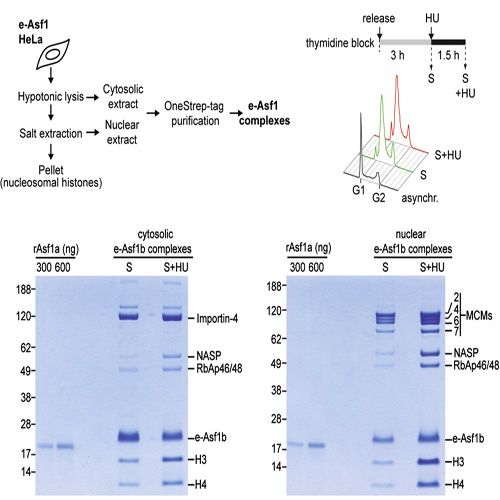Replication Stress Interferes with Histone Recycling and Predeposition Marking of New Histones
12-Mar-2010
To restore chromatin on new DNA during replication, recycling of histones evicted ahead of the fork is combined with new histone deposition. The Asf1 histone chaperone, which buffers excess histones under stress, is a key player in this process. Yet how histones handled by human Asf1 are modified remains unclear. Here we identify marks on histones H3-H4 bound to Asf1 and changes induced upon replication stress. In S phase, distinct cytosolic and nuclear Asf1b complexes show ubiquitous H4K5K12diAc and heterogeneous H3 marks, including K9me1, K14ac, K18ac, and K56ac. Upon acute replication arrest, the predeposition mark H3K9me1 and modifications typical of chromatin accumulate in Asf1 complexes. In parallel, ssDNA is generated at replication sites, consistent with evicted histones being trapped with Asf1. During recovery, histones stored with Asf1 are rapidly used as replication resumes. This shows that replication stress interferes with predeposition marking and histone recycling with potential impact on epigenetic stability.











